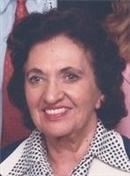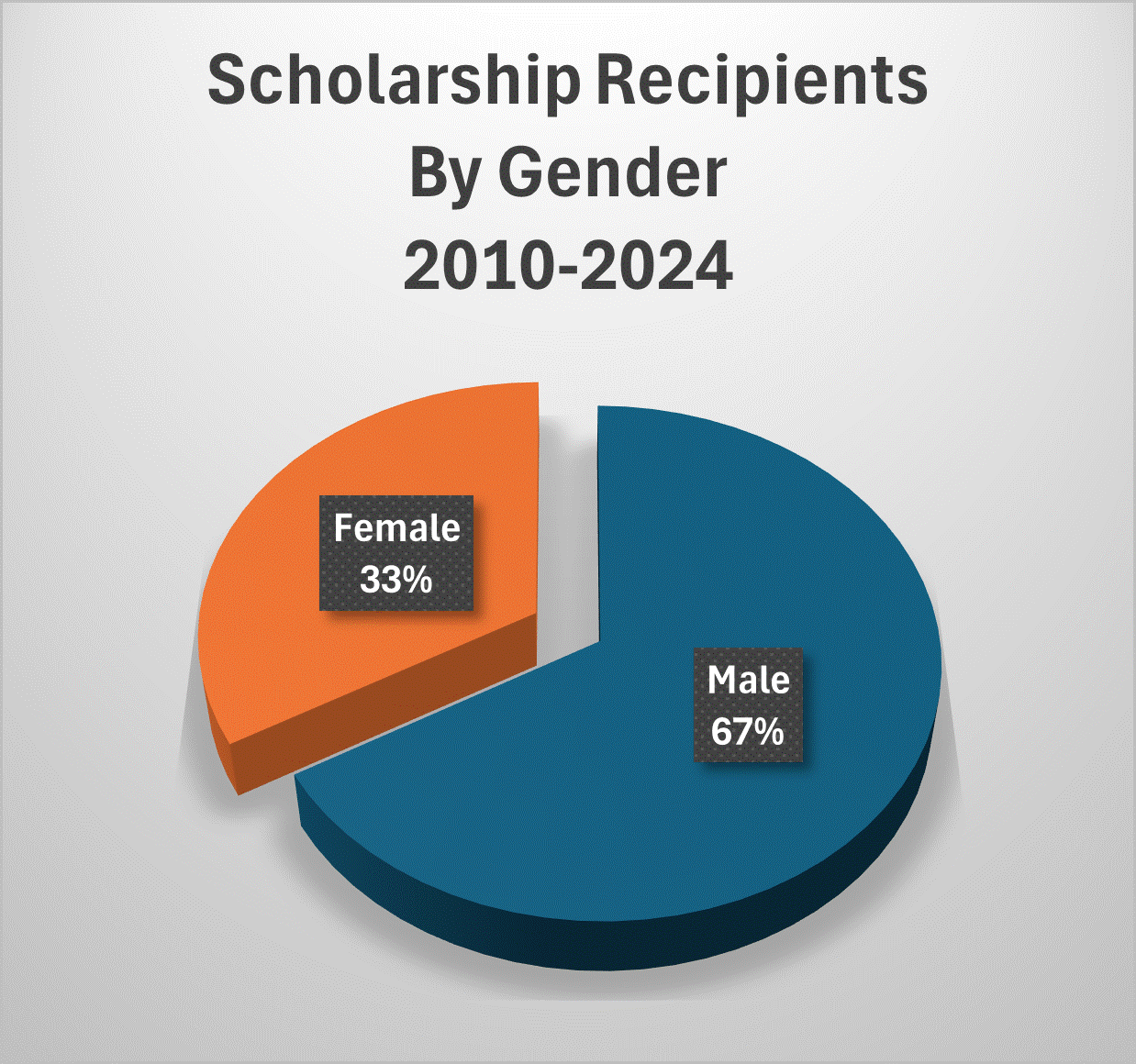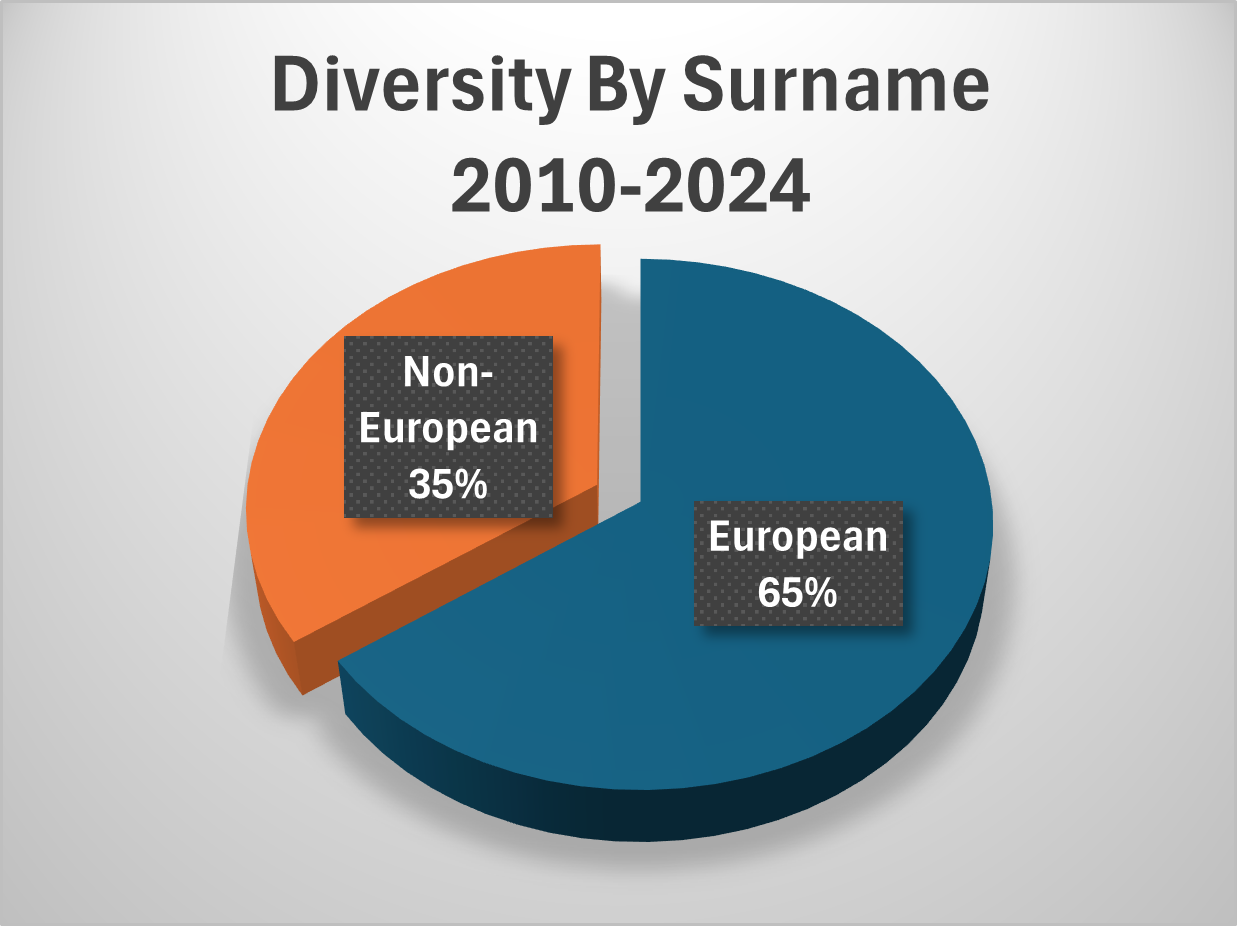Scholarships, Part 2 –Equalizing and nurturing at the chapter level
Unless you are an applicant or recipient, the scholarship program is probably not on your radar. Nevertheless, scholarships have a quantifiable impact on the industry’s gender and ethnic diversity, as well as its professionalism, as gauged by education.
Let’s do the numbers
In the two decades that the Northern California Chapter has been granting scholarships, 135 students have received a total of $124,870 in aid. Nearly 65% of the recipients were granted awards through the Mary Dee Karp Memorial fund, an endowment formed under the Foundation’s “Named Education Scholarship,” or NES program. More about that later.
In the early days, the Foundation annually funded five $500 awards to be applied to a CI 101 course. In 2013, the scholarship amount increased to cover the full tuition for any of CCIM’s core courses. With the growth in popularity of the NES, in 2017 the Foundation dropped its non-NES funding for chapters with multiple endowments. In its peak year, 2010, the Chapter awarded 10 scholarships. That leveled off to seven awards per year until 2017 when Chapter-awarded scholarships leveled off to five, the number of NES Mary Dee Karp Memorial funding accounts.
One person making a difference
By all accounts, Mary Dee Karp was an interesting character. She was smart, tenacious, resourceful and often stubborn. She was also a pioneer in the Bay Area’s commercial real estate industry.

Mary Dee Karp, CCIM
Born in 1923, Mary Dee graduated from UC Berkeley’s Haas School of Business in 1944. After serving in the Army, she got her broker’s license and her CCIM designation. Armed with a background in accounting and real estate, she formed a successful real estate consulting firm. All the while, she was a single mother raising three children.
Over the years she was very active in organized real estate serving as president of CCIM’s Northern California Chapter and the Contra Costa Association of Realtors. She was also an honorary director for life of the California Association of Realtors and the CCIM Foundation.
When Mary Dee died in 2014, she left a legacy tribute to the value of education. She funneled client donations into a UC Berkeley football scholarship and five CCIM NES accounts.
In the 20 years since Mary Dee funded the chapter’s first endowed scholarship, 87 awarded have gone to 75 individuals representing a total of $93,190 in funding. Not a bad legacy for a working mom!
Inclusion and Diversity—Slow in coming, but coming it is
 In its early days the commercial real estate industry was almost exclusively middle-aged white men and that demographic was slow to change. Of the first 25 chapter presidents, only five were female. Early scholarship recipients reflected the same pattern. However, by 2018 the landscape began to change as 50% of that year’s six recipients were female. In 2024, five of the seven recipients were female.
In its early days the commercial real estate industry was almost exclusively middle-aged white men and that demographic was slow to change. Of the first 25 chapter presidents, only five were female. Early scholarship recipients reflected the same pattern. However, by 2018 the landscape began to change as 50% of that year’s six recipients were female. In 2024, five of the seven recipients were female.
 Even slower in changing was the ethnic or “minority” demographic. Looking at early rosters, you can count on one hand the number of chapter members with non-European surnames. (While the use of surnames to measure ethnic diversity is a far from perfect yardstick, it’s the only tool in the box. And without it, we can’t begin to quantify the landscape.) With the sharp rise in foreign investment in Bay Area CRE in the first decade of the 21st century, more immigrants and their children turned to real estate careers, usually starting in residential real estate. People of Asian origin in particular began to show up in CCIM classes—and apply for scholarships. It wasn’t until the 2020’s that Hispanic surnames began to surface. In both 2023 and 2024, nearly half of the scholarship recipients had Hispanic surnames.
Even slower in changing was the ethnic or “minority” demographic. Looking at early rosters, you can count on one hand the number of chapter members with non-European surnames. (While the use of surnames to measure ethnic diversity is a far from perfect yardstick, it’s the only tool in the box. And without it, we can’t begin to quantify the landscape.) With the sharp rise in foreign investment in Bay Area CRE in the first decade of the 21st century, more immigrants and their children turned to real estate careers, usually starting in residential real estate. People of Asian origin in particular began to show up in CCIM classes—and apply for scholarships. It wasn’t until the 2020’s that Hispanic surnames began to surface. In both 2023 and 2024, nearly half of the scholarship recipients had Hispanic surnames.
Blacks—well that is a different story. Obviously, it is impossible to use the surname yardstick to quantify the number of Black members or scholarship recipients, but based on my 20 years with the Chapter, I can think of only one or two Black members. Steve Peterson of Oakland was a notable standout. As an active member of the Chapter leadership team for a decade, and as Chapter President in 2018, Steve brought his friends and staff to chapter meetings and encouraged them to network. But none went on to pursue the CCIM designation, and even Steve dropped it in 2020.
From scholarship to designation
 The more I researched the career progression of scholarship recipients, the more disappointed I became. In the 14 years for which we have data, a mere 28% of chapter scholarship recipients actually went on to receive their CCIM designation. Perhaps that is a good percentage. But having read the enthusiastic cover letters of hundreds of scholarship applications, I couldn’t help but be disappointed in the fallout rate. I did, however, make an interesting observation. In those years that the chapter offered an introductory course like “Fundamentals” or “Introduction to CRE,” students who went on to take CI 101 often took the other core courses and became CCIM designees.
The more I researched the career progression of scholarship recipients, the more disappointed I became. In the 14 years for which we have data, a mere 28% of chapter scholarship recipients actually went on to receive their CCIM designation. Perhaps that is a good percentage. But having read the enthusiastic cover letters of hundreds of scholarship applications, I couldn’t help but be disappointed in the fallout rate. I did, however, make an interesting observation. In those years that the chapter offered an introductory course like “Fundamentals” or “Introduction to CRE,” students who went on to take CI 101 often took the other core courses and became CCIM designees.
On the other hand, if a student’s first serious exposure to commercial real estate was through a CI 101 course, there is a far greater chance that that course will be their last.
So do scholarships lead to the designation? Sometimes; but only if the recipient is going into the process with a clear understanding that commercial real estate investment is a numbers game. It’s not glorified residential real estate. If you can’t handle the math, you need to choose another career.
Investing in leaders
Far more rewarding than the correlation between scholarships and designees is the impact the scholarship program has on nurturing future chapter leaders. A conservative count using available data reveals that over the years nearly 20 chapter leaders received at least one scholarship. Six went on to become chapter presidents. Maybe this speaks to the ambitious nature of the individual. Maybe it is the recognition that success in the field comes from personal branding and name recognition earned through aggressive chapter networking. Maybe, as some say, there is a desire to pay the industry back for the career boost. My guess is that there is a bit of all of the above. Regardless of the motivation, there is no doubt that the investment in a rigorous scholarship program has the side benefit of building the leadership volunteer pool.
So, I hope that after reading this you have a new appreciation for the less obvious virtues of a scholarship program. Recruit an applicant. It may be your legacy.
By Terry Shores
September, 2024
The Legacy Project is an evolving collection of articles and photos chronicling the history of The CCIM Institute and its Northern California Chapter. Blogs are added regularly and updated as new information becomes available. Readers are invited to comment and submit facts and photos. Opinions expressed are those of the author or contributor and not of NorCal CCIM, the CCIM Institute or the CCIM Foundation. We hope you enjoy The Legacy Project!
Ready to Contribute To The Legacy We're Building?
GET STARTED
If you have an idea, an observation, a photo -– anything that would contribute to the project, contact us today!
legacy articles
contact
our chapter
about
home
ccim national
mailing address
NorCal CCIM
2872 Ygnacio Valley Road #10
Walnut Creek, CA 94598